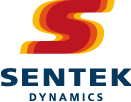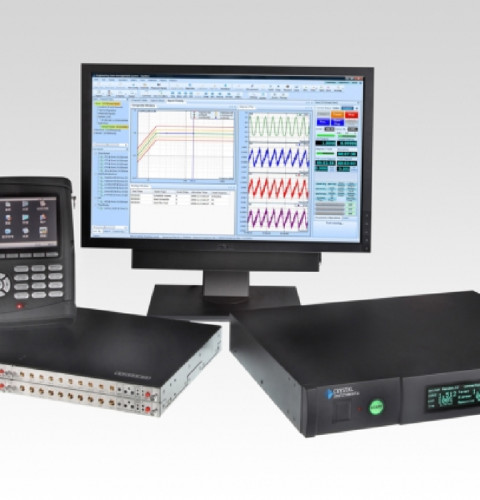
DSP Centralized Architecture
Unlike traditional vibration test controllers that rely heavily on an external computer for real-time operation, the Spider-81 is the first vibration controller that directly integrates time-synchronized Ethernet connectivity with embedded DSP technology. This strategy greatly increases the control performance, system reliability and failure protection of the vibration test controller. It also allows a large number of channels to be configured without sacrificing system performance.
Latest Hardware Design
Spider-81 vibration test controllers have voltage, charge, TEDS, and IEPE inputs which are ideal for shock, vibration and acoustic measurement or general purpose voltage measurement. The internal flash memory stores test configuration data for controlling up to 64 channels simultaneously in addition to storing real-time analysis data. Multiple output channels provide various signal output waveforms that are synchronized with the input sampling rate. A bright LCD screen displays testing status information. Ten monitoring connections on each unit are used to read signals of analog inputs and outputs. Built-in isolated digital I/O and RS-485 serial ports enable interfacing with other hardware.
Software Features
-
Random Vibration Control
-
Swept Sine Vibration Control
-
Classical Shock Control
-
Transient Time History (TTH)
-
Time Waveform Replication
-
EDM App for iPad
-
More Vibration Control Software Options
Multiple-Input Multiple-Output (MIMO) Control
The advanced Multiple-Input-Multiple-Output (MIMO) control from the Crystal Instruments’ Spider system recreates multiple degree-of-freedom vibration environments in the testing laboratory. Applications include a dual shaker setup to either push-and-pull or produce simultaneous excitation in the same direction, a complex system shaking a large structure in three axes simultaneously, or those driving a very heavy structure in one axis while sharing the load over many shakers.
In a MIMO Random test, MIMO produces true Randoms for all control points (each assigned with a PSD profile) using multiple shakers in the system. Not only is the control point magnitude controlled, the phase relationship among the control points is controlled as well. The same quality of control offered by single shaker Random control is inherent to MIMO Random control. Adaptive control guarantees rapid equalization and accurate control in the face of non-linear responses. It also reduces the time required to achieve full level testing, which reduces the exposure to low level energy for the test article.
MIMO Sine, like MIMO Random, is capable of controlling the magnitude of the control points and the phase between shakers or between axes.
By maintaining a multi-dimensional system impedance matrix, the Spider System is always capable of determining the contribution from each shaker to the overall response and properly differentiating for each actuator so that proper, accurate, and safe control is assured. The complex issue of singularities is addressed with an elegant solution that permits intricate tests to be performed without having to resort to test segmentation in an attempt to avoid the singularity.
The MIMO Control provides all the control types you may require, i.e., MIMO Random, MIMO Sine, MIMO TWR, and more. For detailed availability of the MIMO control product line, please contact the Sentek Sales office
Simple Network Connection
Ethernet connectivity allows the Spider-81 vibration test controller to be physically located far from the host computer. This distributed structure greatly reduces the noise and electrical interference in the system. One computer monitors and controls multiple controllers over the network. Since all the control processing and data recording are executed locally inside the controller, the network connection will not affect the control reliability.
Time Synchronization Between Multiple Vibration Test Controllers
The Spider-81 vibration test controller is built on IEEE 1588 time synchronization technology. Spider-81 vibration test controllers on the same network are synchronized with up to 50 ns accuracy, which guarantees ±1 degree cross channel phase match up to 20 kHz. With such unique technology and high-speed Ethernet data transfer, the distributed components on the network truly act as one integrated system.
Product Specifications
-
Analog Inputs: 8 BNC connectors per Spider-81 vibration test controller. Spider-81 and Spider-80X front-ends can be networked to form a 512 channel count system. Charge, voltage or IEPE, single-ended or differential, AC or DC coupling, 150 dBFS dynamic range, 24-bit D/A converters, range ±20 volts, up to 102.4 kHz fs per channel, 8 BNC connectors per Spider-81 front-end.
-
Analog Outputs: 2 BNC connectors per unit, 100 dB dynamic range, 24-bit A/D converters. ±10 volts
-
Channel Phase Match: Better than ±1.0 degree up to 20 kHz among all channels
-
Peripherals: 8 isolated DIO; 10 monitoring channels, LCD display with navigation buttons, RS-485, ground connection, abort contact switch, start and abort buttons
-
Dimensions: 440 x 66 x 330 mm (WxHxD)
-
Weight: 4.2 kg
-
Power: Up to 18 watts during operation.
-
Computer Connections: 100Base-T, RJ45 female connector supports connection to computer or network switch
-
Internal Memory: Flash memory for data storage is 4 GB per unit
-
Operation Modes: Connected to computer or stand alone Black Box mode.
